Related Content
Content
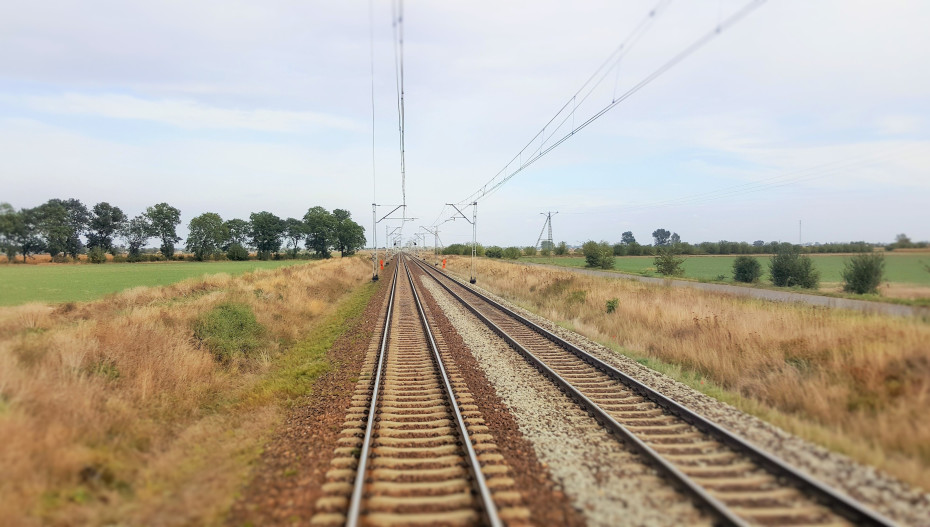
Poland by train
Welcome to the guide on how to save money, time and confusion when travelling in Poland by train.
Share
Helpful links:
Poland has invested heavily over the past decade to modernise its trains and stations, which now frequently compare to some of the best in Europe.
Though this on-going investment is leading to a large number of works being carried out on the railway lines; which seems to impact in particular on Saturday departures.
If you would like help with planning a train journey within or to/from Poland or want to add some Polish destinations to a European train travel itinerary, take a look at ShowMeTheJourney's new Concierge Service.
Finding your train at a main station in Poland:
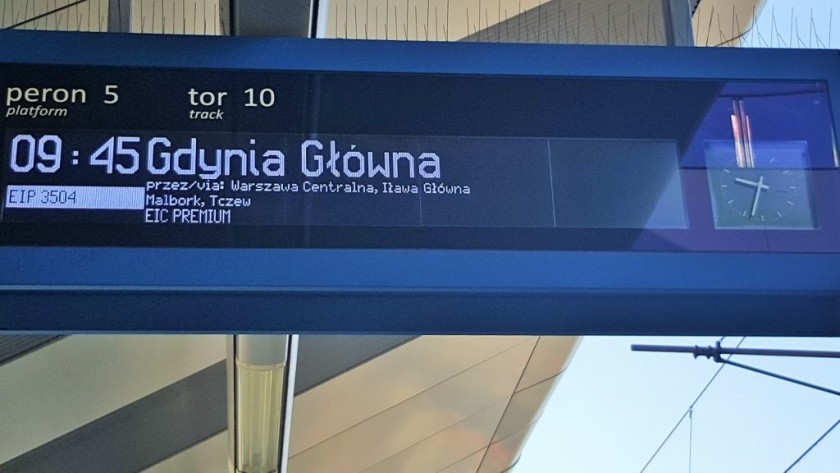
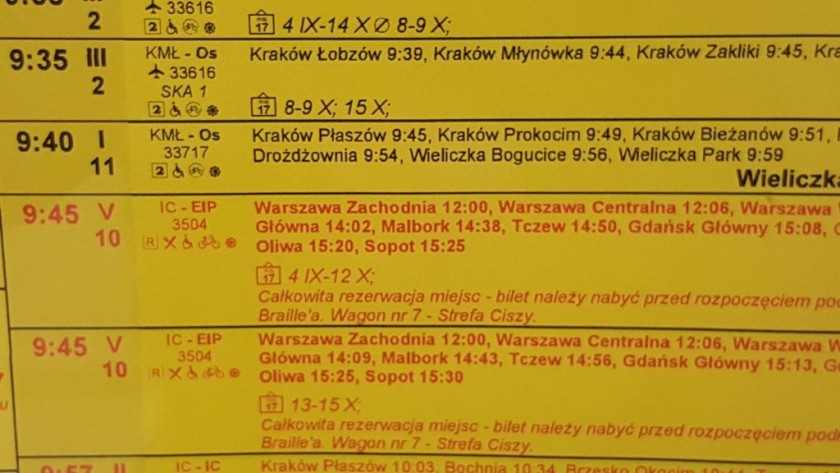
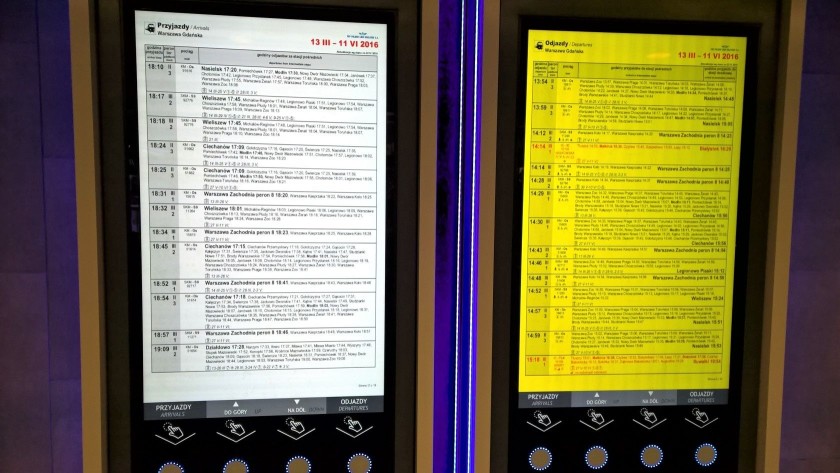
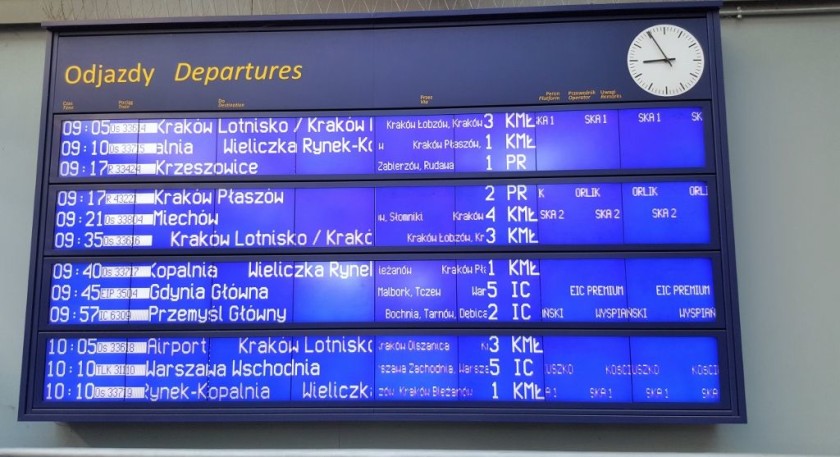
There is one aspect of Polish train travel that can be particularly confusing to overseas visitors and that is to do with how the platforms (perons) AND tracks are numbered at the large stations in Poland.
If you think of the platform in a station, as an island between the railway lines/tracks, with trains departing from both sides of the island; in Poland these ‘islands' are named 'Perons'.
Or in other words these ‘islands’ are the platforms, while each side of the platform, which the trains depart from and arrive at, are the tors (tracks)
In Poland the ‘perons’/platforms have their own numbers, but OTHER additional numbers are used for the tors (tracks).
However, on the electronic departure screens on station concourses and in the entrances, only the 'Peron' numbers are shown.
The core idea is that you make your way to the peron and THEN when you are on the peron/patform, there are other info screens which tell you which specific 'tor' your train will be leaving from.
Each numbered tor/track also has its own dedicated departure indicator.
Or you can use the yellow departure 'Odjazdy' sheets, as these list both the peron (platform) numbers AND the track numbers.
To avoid confusion (ahem) roman numerals are used for the ‘peron’ numbers on these departure sheets* and numerical numbers are used for the tracks.
So, for EXAMPLE, when arriving at Krakow Glowny station to take a train to Warszawa – the ‘peron’ number on the electronic departure board may be 5, but the departure sheets will show this ‘peron’ number as ‘V’, with the track number written as 10 beneath it.
So you would follow the signs to ‘peron’ 5 and then when on ‘peron’ 5, you would locate the electronic indicator for tor 10; and this is where the train to Warszawa will be departing from.
Don’t let that put you off as trains can be an easy and comparatively cheap means of exploring Poland.
*At some stations the yellow Odjazdy sheets are paper posters, but some major stations have electronic versions - you can use buttons to scroll through the departures.
Also worth knowing about the stations:
'Glowny' is often used for station names in cities other than Warszawa/Warsaw.
The English translation of 'Glowny is 'main station'.
Warszawa has three stations used by long distance trains; Warszawa Centralna lives up to its name with a city centre location.
However, trains from the south and west call first at Warszawa Zachodnia station before going on to Warszawa Centralna and then they call at, or terminate at Warszawa Wschodnia station.
Similarly trains heading to the capital from the north and east, first call at Wschodnia station, before going on to call at Centralna and then Zachodnia station.
On the peron/platforms, the indicators which show the details of the trains that depart from each specific track, will also show the details of arriving trains.
So if you see an unexpected destination on these indicators, it's usually because a train, which will be using the same track from which your train will be departing, has yet to arrive.
Also if you will be taking an EIP or EIC train from a station at which it commences its journey, when you arrive on the platform/peron it can be obvious that the train you will be taking will already be at a track.
However, don't board the train until its departure details appear on the track indicator - if you board too soon, the conductor can politely ask you to leave the train.
Rail Holiday Ideas for Poland by train
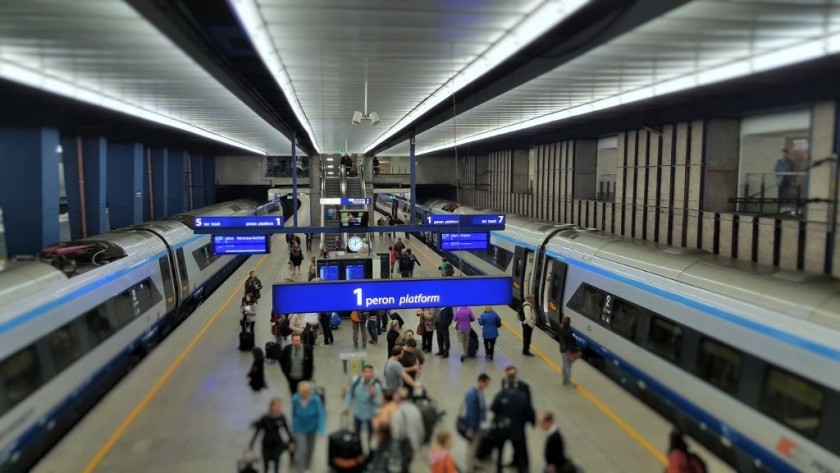
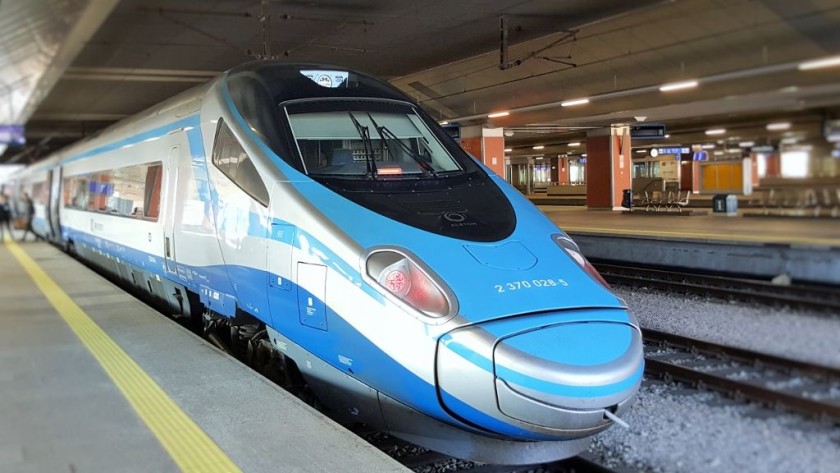
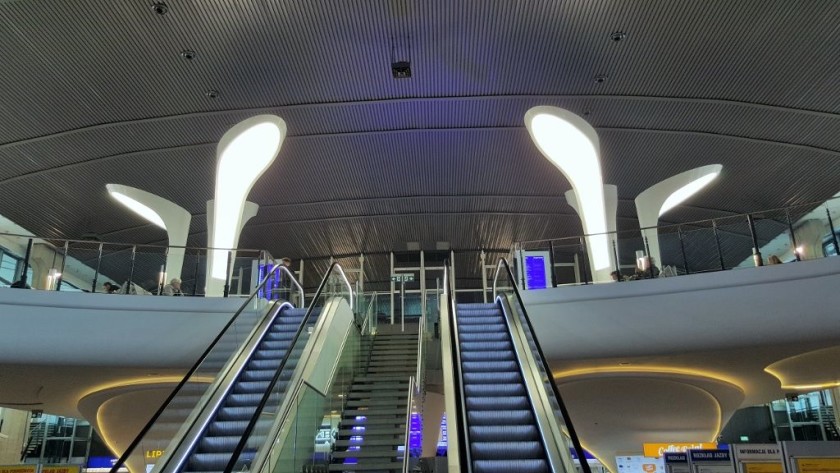
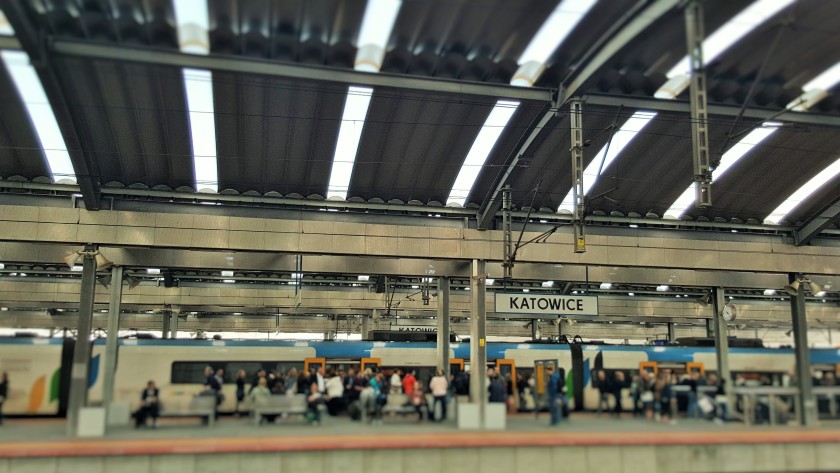
Good to know about the trains:
State managed company PKP InterCity operates all of the express trains in Poland, while most of the regional and local train services in Poland are operated by Polregio.
Other companies operate some local train networks.
Most of the local/commuter trains to/from Warszawa are operated by Koleje Mazowieckie or SKM - the trains to/from Chopin Airport are operated by SKM.
the PKP Intercity services:
PKP InterCity groups its trains into four categories of service
(1) EIP
(2) EIC*
(3) IC
(4) TLK
* When booking tickets for journeys within Poland on the international EC trains, PKP InterCity categorises these services as EIC services.
EIP trains are fastest, followed by the EIC trains, while the IC and TLK trains are slower; though the journey time difference between the EIC services and the fastest IC services can be marginal.
IC trains are generally faster than TLK services, but not on all routes.
A bonus of travelling 1st class on the EIP and EIC services are the complimentary snacks and drinks; complimentary light meals are served in 1st class on the rather fabulous EIP trains.
However, Polish express trains are comparatively infrequent, so look up train times on the PKP InterCity website before heading to a station, even if you will be purchasing last minute at a ticket desk.
the Polregio services:
Note that PKP InterCity only operates the long distance and mid-distance express trains.
Most of the regional and local train services in Poland are operated by Polregio.
On these popular routes:
- Warzawa - Lodz
- Poznan - Wroclaw
- Poznan - Szczecin
- Poznan - Torun
- Krakow - Zakopane
- Krakow - Katowice
- Gdansk - Sopron - Gdynia
you will have a choice between taking Polregio or PKP InterCity services.
In theory the longer distance Polregio services will be the 'Inter-Regio' branded services, while the shorter distance services, including the local trains, are 'Regio' services, but this can be a tad inconsistent.
Notes on the ticketing:
How tickets are sold online for journeys within Poland depends on the trains you will be taking; PKP for the express trains and Polregio for the regional trains, but international journeys can be booked with Polrail.
Booking on the PKP website:
PKP InterCity's website now has an English language version and it sells tickets for the four types of express train services which it operates.
It places tickets on sale 30 days ahead and the further ahead you book, the cheaper the prices will be
When booking on the PKP InterCity website, the only choice of tickets is 1st or 2nd class, it will automatically offer the cheapest possible price available for each departure.
On many routes there is a choice between different PKP InterCity services and when that is the case, the EIP and EIC services are always the most expensive option.
TLK services were introduced to provide a low-cost travel option, so when there is a choice of PKP InterCity services available, the TLK services are always cheaper than the EIP or EIC services.
Though the prices of the IC and TLK services can be more similar.
PKP InterCity trains leaving at different times of the day can also be cheaper, so it's worthwhile being flexible re: arrival and departure times.
The demand for a particular departure can have a greater influence on price than journey times.
Tickets purchased on PKP InterCity for journeys within Poland, can be refunded right up until the travel date with no charges.
Booking with Polregio:
Tickets for the regional and local trains managed by Polregio can be booked on its website, but they're not discounted online, so will cost the same price if you buy at the station.
Because Polregio doesn't sell tickets for PKP InterCity services and vice-versa, PKP InterCity does not sell tickets for the Polregio trains - when both services operate on a route, it's best to compare prices on each of their respective websites.
Child tickets:
Child Tickets for Train journeys within Poland:
The ages of all travellers, including infants, can be entered when booking and as long as appropriate seats are available, there will be no charge for the places occupied by those aged three and under.
If tickets for a family group are booked on PKP, look out for the option to book 'Family Tickets'; there is a symbol/icon that needs to be ticked named 'Family Ticket' (ignore the button marked 'Big Family'.)
The offer is valid provided that 2 to 5 persons, including at least one child under 16/aged 15 and under, will be travelling together.
Clicking the Family Icon reduced the total cost for the entire party by 30%.
Child Tickets for Train journeys to/from Poland:
For journeys by EC train between Poland and Berlin - book Europa Spezial tickets on DB and children and grandchildren aged 14 and under travel for free when accompanied by a parent or grandparent
Tickets for all other international day and night trains can be booked at major stations in Poland and the terms for child tickets will vary according to the countries you will be travelling to.
Apologies but our efforts to provide more precise info than this have proved to be in vain.
Tickets for bicycles:
PKP charges a flat rate of PLN 9.10 = approximately €2 for bike tickets, irrespective of the distance you will be travelling.
These tickets can be purchased online when booking your travel tickets.
You can only purchase 2nd class tickets if you travel with a bike on the EIC and EIP trains, the dedicated bike storage areas are in the part of the train which has 2nd class seats – the booking system should allocate you a seat reservation in the coach in which the bike storage is located.
The trains used for the IC and TLK services tend not to have dedicated bike storage, so you should board by the first or last doors on a train and stow your bike by these doors, though the conductor will guide you as to what you need to do.
If you already have a travel ticket and will be taking a bike on board an EIC, IC or TLK service, you can opt to purchase a ticket from the train conductor.
Though you must notify the conductor immediately before or after boarding, but buying a bike ticket from the conductor costs an additional PLN 10.
For journeys by the EIP trains, if you haven’t booked a bike ticket online with your travel ticket, you must make an advance purchase at a ticket counter.
On the Polregio trains:
On the regional and local trains operated by Polregio, bikes can either be stored in bike racks or luggage areas, which are marked by signage on the exterior of the trains.
If no storage space is available, you can board into the first and last doors of the train.
Polregio sells two types of flat rate bike tickets, the more expensive of which prioritises that space will be available.
So it’s worth checking at the station whether dedicated bike storage will be available on the train you want to take - and if it is you can de-stress a journey by paying slightly more for this ticket.
The other type of ticket costs PLN 7.
Detailed train ticket and rail pass guide:
International rail routes from Poland:
This second version of ShowMeTheJourney is exciting and new, so we are genuinely thrilled that you are here and reading this, but we also need your help.
We’re striving not to let anything get in the way of providing the most useful service possible, hence a facility has been set up with DonorBox which can be used to support the running costs and make improvements.
Instead of advertising or paywalls, your financial support will make a positive difference to delivering an enhanced service, as there’s a lot of ideas which we want to make happen.
So if you have found the info provided here to be useful, please consider saying thank you.

This is one of more than 100 train travel guides available on ShowMeTheJourney, which will make it easier to take the train journeys you want or need to make. As always, all images were captured on trips taken by ShowMeTheJourney.






